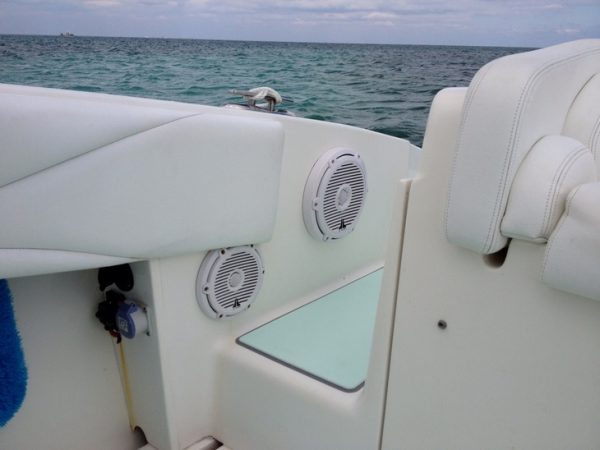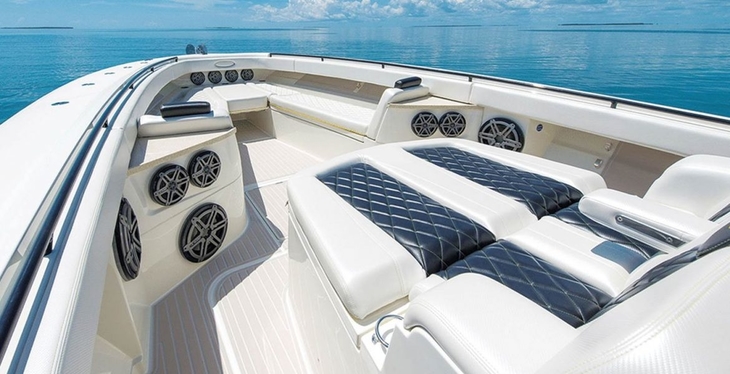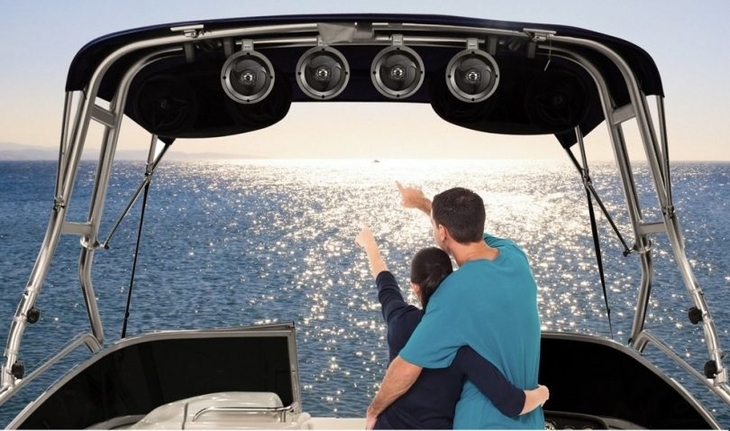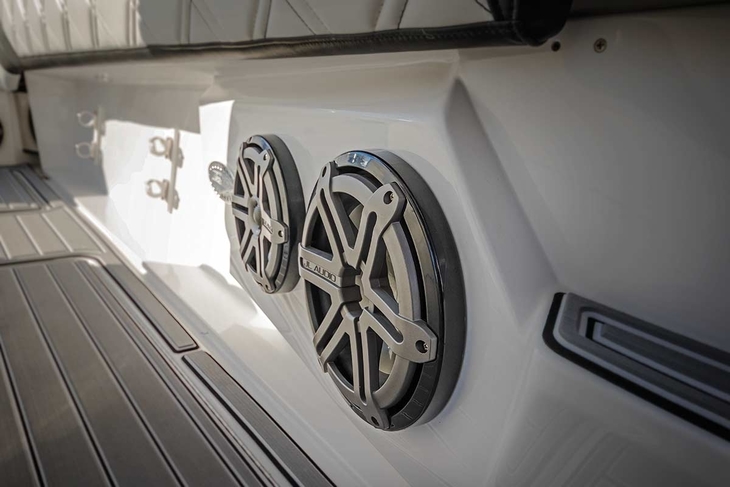15
Feb

Even though sailing is always a fun activity most people enjoy, there’re always ways to elevate the entire experience and make the entire trip more amusing. For instance, equipping your boat with a couple of sailing accessories such as quality marine stereo speakers will keep you and your guests entertained and informed about the latest news.
However, picking proper marine speakers isn’t an easy task at all, considering the specific requirements for marine application and the wide range of choices on the market. So, if you were about to search for a set of boat speakers, here’s what you need to consider.

Speaker configuration refers to the number and arrangement of speakers and independent speaker channels supported by the entire sound system. Hence, before you explore the wide range of marine speakers on the market, it’s best to get to know the different configuration types to choose the most suitable option.
Dual cone speakers feature only one driver that produces sounds through two different cones- one for the low, and the other for the high-frequency sounds. This configuration system is considered basic and not that high-quality, and this is why you can find these speakers for inexpensive prices.
Coaxial, commonly referred to as 2-way or 3-way speakers, use a more advanced configuration system with a woofer and tweeter mounted on the same chassis. In fact, the separate tweeter which is located inside the woofer is intended to handle high-frequencies and deliver them accurately, and this is why this type of system can be more expensive than dual cone ones.
Component configuration speakers use a high-end technology where the tweeter is completely separated from the woofer. This type of configuration is the best, as the system eliminates cross-phase distortion that commonly occurs with coaxial configuration systems. Hence, these systems can be a little bit pricey, but totally worth the investment.

Paying attention to the power capacity of your marine audio speakers is of crucial importance if you want to avoid damaging them. For this reason, it’s important to get a set that can handle an equal amount, or even better, more power than your amplifier.
When it comes to determining the right power capacity, pay attention to the peak power and the RMS ratings of your speakers. Peak power refers to the amount of power the specific unit can produce at any given instant, while RMS is the continuous power or the average amount of power the unit can put out over time. Keep in mind that the RMS power is always lower than the peak one, and many manufacturers tend to “hide” it to attract buyers.
Knowing both of these ratings is of crucial importance, especially when using speakers with an external amplifier. Even if that’s not the case, having speakers with the right power capacity will keep you ensured that they’re properly tuned and produce loud and clear sounds.

Many stereo speakers for home and automotive applications will feature steel frames, exposed copper wires and in some cases, paper cones. However, when it comes to water conditions, this can be a huge issue, as you’re probably familiar that steel rusts, copper corrodes and paper dissolves.
For this purpose, know that a good marine speaker set will feature polypropylene cones, neoprene rubber surrounds, corrosion-resistant metal and UV-resistant plastic parts. On top of this, the other components should also be made of waterproof and UV-resistant materials so they can withstand the corrosive effects of salty water and sun exposure while not compensating for the sound quality they produce.

Last, but not least, pay attention to the installation size of the speakers. At this point, it’s crucial to mention that there aren’t standard sizes that can help find the exact fit, and this is especially important if you’re replacing factory-installed speakers with a new set.
For instance, if a manufacturer states that their speakers are 6.5” in size, this refers to the diameter of the cone inside, not to the entire speaker. On top of that, some speakers may have a grille that is almost an inch larger in diameter, which significantly impacts the entire installation size.
In other words, even when different speakers feature the same cone size, they may feature different installation sizes, so it’s best to look for detailed measurements before picking the right fit. For this purpose, marine speaker sets come in two types of installation sizes- flush-mount and box-mount speakers.
Flush-mount speakers will require cutting out custom holes and proper mounting techniques. Also, as they require adequate mounting depth, keep in mind that there must be space available behind to fit the magnet and the cone, as well as enclosed airspace to maximize the resonance your speaker produces. An air space that is too small will inhibit the movement and result in a low-quality frequency response.
On the other hand, box-mount speakers don’t require cutting holes, but they can be installed at any desired spot on your boat. But even though installing these speakers is a piece of cake, keep in mind that they can take up more space and add unnecessary clutter to your boat.
Now that you know the most important aspects, it’s time to hit the market and pick the best marine radio speakers for your boat.